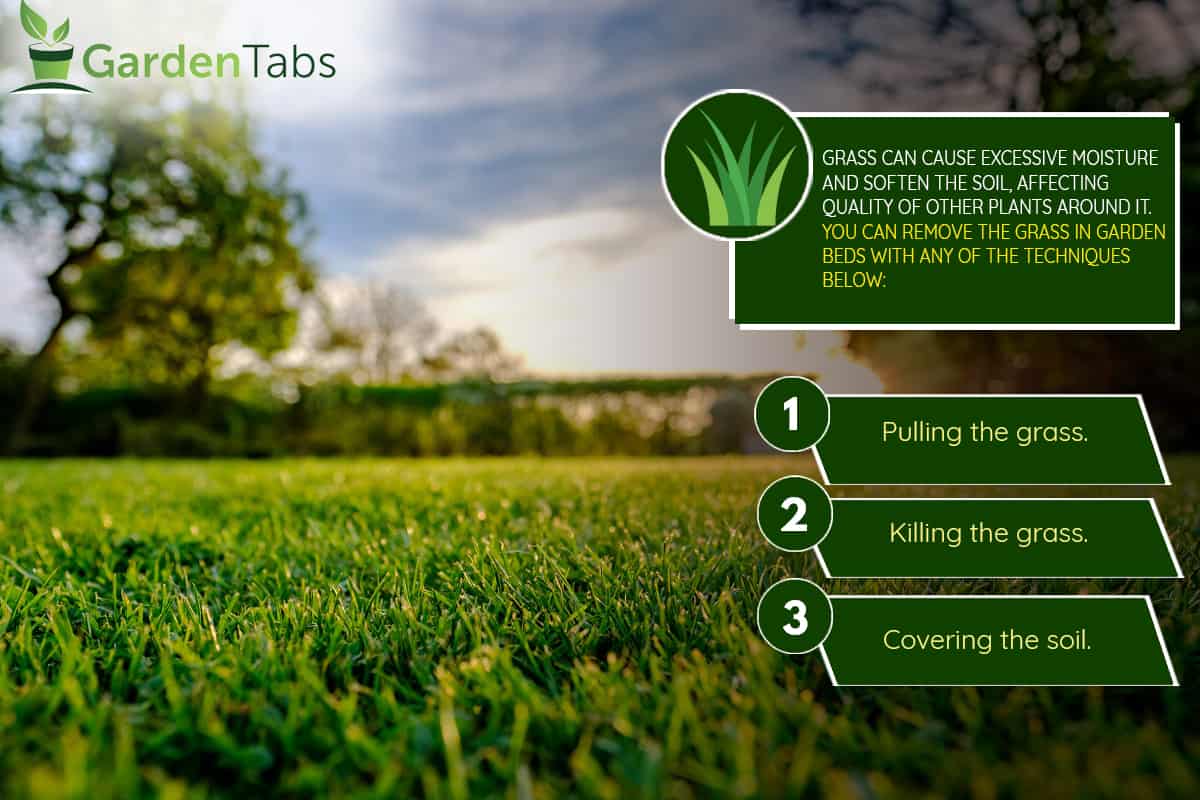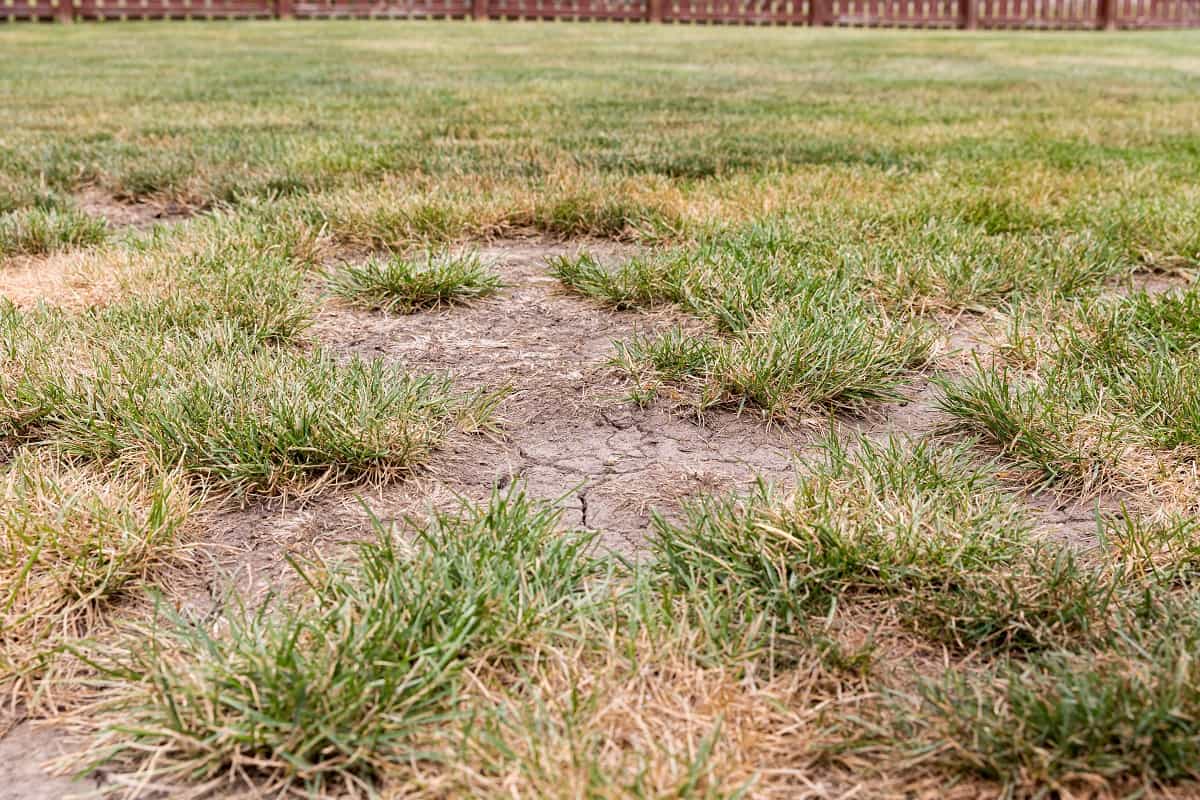A garden is often more appealing if it looks organized. But what if grass starts growing in unwanted spaces? How could you keep the grass out of the garden beds? Relax! We've researched the answers for you.
Grass can cause excessive moisture and soften the soil, affecting the quality of other plants around it. You can remove the grass in garden beds with any of the techniques below:
- Pulling the grass
- Killing the grass
- Covering the soil
In this article, we'll find out why the grass grows on garden beds and how to get rid of it. We'll share some techniques you can do, as well as relevant matters you should be aware of. More things to learn with us today. So let's continue reading!

How Do You Keep Grass Out Of Your Garden Beds?
Grass can ruin the garden if you let it grow and overtake the other plants unless you take care of it. We'll give you various options to keep the garden grass-free. See the options below.
1. Pulling the Grass
Pulling the grass can significantly improve the soil's health since the nutrients go directly to the plants around it. However, you need to be careful not to uproot the surrounding plants.
You can use a tool to pull the grass out. It's easier than manually pulling it by hand, especially for deep soil.
See this grass pulling tool on Amazon.
2. Killing the Grass
It's possible that grass will regrow on the soil after you pull it up. Because of that, you may want to kill the grass completely. See below for several options and how to use them.
Herbicide
Herbicide is a chemical used to kill unwanted plants. It is useful if you want to highlight the growth of a specific plant by killing the plants around it. However, herbicides have a potential risk to human health.
Make sure to consult a professional before using herbicide in your garden. We also recommend not using herbicide near any fruits, herbs, or vegetables you plan to eat.
Vinegar
Vinegar is a strong substance that's powerful enough to stop grass from growing. You can make your own mixture of vinegar solution at home. Simply follow the steps below:
- Prepare a clean plastic container.
- Mix two cups of vinegar and two teaspoons of dishwashing liquid. You can also add a lemon or citrus to improve the smell.
- Add 30 milliliters of rubbing alcohol, then stir the mixture.
- Dilute the solution in an equal amount of water. This is ideal to keep the soil quality and avoid killing other plants.
- Pour the mixture into a clean spray bottle, then spray on the grass.
Newspaper Technique
This technique uses newspaper to decompose the grass faster than usual decomposition. It's a traditional way of killing grass, in which the newspaper converts the grass into a nutrient for the soil. As a result, the area where grass decomposes becomes a healthy spot for growing new plants.
To do the newspaper technique, simply follow the steps below:
- Place the sheets of newspaper on top of the grass.
- Wet the newspaper with water.
- Add at least a three-inch layer of mulch.
- Wait a few days and pull the grass that grows on the newspaper.
- Repeat until the entire garden is free of grass.
Boiling Water Method
Pouring boiling water into the grass, or onto any plant, can quickly dry up the nutrients. Boiling water can drain the plant's energy until it gets too weak. However, this may not instantly kill the grass. You might need to repeat pouring boiling water 7-10 days later. You should also be careful not to pour on the nearby plants.
3. Covering the Soil

The grass gets sunlight and grows from it. That's why covering the soil makes it less sustainable. See below the options you can do.
Using a Mulch
Mulch covers the unwanted plants while exposing the plants you want to sustain. You can use an organic mulch like grain straw or hay.
Simply refer to the steps below:
- Clear the garden bed of debris.
- Water the soil to keep it moist.
- Spread mulch all throughout the area.
- Apply 2-4 inches of mulch to the plant's base with your hands.
- Water the garden bed again.
Installing Pavers
You can also install pavers in the garden. However, this will prevent you from planting on the soil. Pavers are ideal if you want to convert the garden into a pathway or a driveway. You can ask a professional to assess this option.
Refer to the general steps below:
- Dig a perimeter around the chosen area in the soil.
- Pour sand over the area.
- Lay down the pavers starting from the corners and along the edges.
- Fit the pavers into the area. Cut the excess edges if necessary.
- Thump the pavers to stabilize them on the ground.
- Spread polymeric sand all over the area to fill in the gaps between pavers.
- Wash the pavers with water to harden the sand beneath them.
- Let the pavers dry.
How to Cut Grass with a Lawnmower
Mowing is a way of trimming the grass to make the yard more attractive. This is different from removing the grass, as mowing tends to maintain the grass at its desired height and shape.
You can refer to the steps below on how to use a lawnmower:
- Look beneath the mower and remove any dust and debris.
- Set the mower's height to 2-3 inches.
- Refill the fuel before you start the mower's engine.
- Mow the grass to no more than one-third of its height.
- Begin with the garden's perimeter.
- Continue mowing the area in a straight line, slightly overlapping the previous spots you mowed.
- Use a string trimmer to cut the top of the grass.
- Collect the grass clippings after mowing.
What Can You Do with Cut Grass?

The grass is still decomposable even after you cut it from the garden. Cut grass actually doesn't go to waste, as there are ways you can recycle it. See below for some ways to maximize the purpose of cut grass.
Compost
Compost is a pile of biodegradable materials that act as fertilizer to support plant growth. You can add the cut grass to the compost, given that grass will extract its nutrients from the soil. With this, you help reduce the waste and nourish the plants at the same time.
Follow the steps below to incorporate grass into your compost:
- Allow the grass to dry naturally inside a sack or bag.
- Pour the sack of grass into the compost. Make sure the grass is not older than 14 days.
- Mix some brown materials like wood chips or brown leaves. Your compost is now ready.
As a Mulch
Believe it or not, grass clippings can also act as mulch as long as they're not treated with a herbicide. The soil can absorb the herbicide and may cause the plant to die.
Grass mulch is not as effective as other organic mulches. You should dry the grass first, as wet grass will be too saggy for the soil.
How Long Before the Grass Regrows?

It usually takes 10–14 days before the grass regrows in the soil. However, regrowth depends on where you cut the grass. The leaves you cut from moving will get into shape again if you continue to sustain them. But killing the grass from the roots using an acid or solution may not guarantee regrowth.
Why is the Garden Soil Too Soft?

The main reason for soft soil is an excessive amount of water due to rain or frequent watering of plants. Too much water can drown and kill the plants. It's important to dry out the garden soil a bit. If watering helps soften the soil, then putting some dry leaves or proper mulching helps absorb the water.
Can You Burn the Grass?

Burning the grass is often an alternative to getting rid of grass clippings. But you should be careful not to get the other plants damaged. You can burn the grass by adding it to an already burning fire. However, you should ask the local authorities if they allow burning grass in your area.
Conclusion
This is such another helpful article, isn't it? We learned how to keep the grass out of the garden bed with some ways you can consider. It's important to do a proper assessment of the garden to avoid damaging the surrounding plants.
Do you want more like this? Try to visit these articles:



